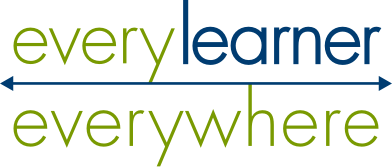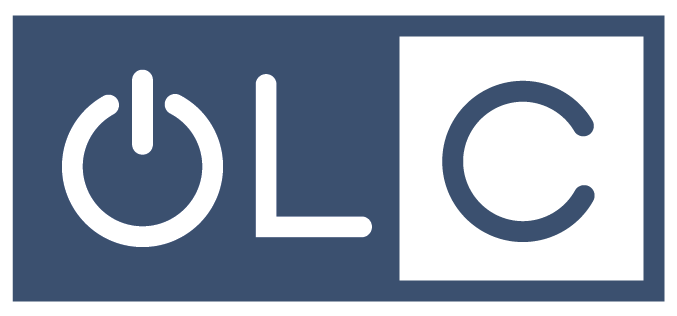The concept of blended learning in higher education has become familiar in the last few years, usually referring to the blending of digital and traditional classroom resources and practices to close equity gaps for student success.
Now a new publication proposes a model for blending applied not just to instructional design but to the entire higher education institution. This is the concept behind The Blended Institution of Higher Education (BIHE): A Model for a Sustainable Institution, created in partnership between Every Learner Everywhere, the Online Learning Consortium (OLC), and the National Research Center for Distance Education and Technological Advancements (DETA). It outlines how an institution can take a blended approach to unite all the student-facing operations of a college or university — student services, technology, learning, and support — to prioritize student equity and center student success.
Blended institutions focus on students
Dr. Nicole Weber, Associate Vice President of Learning at OLC, is one of the contributing authors of the BIHE resource, along with Abby McGuire at OLC and Tanya Joosten at DETA. Weber explains that the blended institution model centers student needs and success by ensuring equitable and inclusive experiences for all students, while intentionally integrating modalities throughout the institution to meet students where they are.
“What we talk about in the Blended Institution resource is similar to the course design and facilitation process,” she says. “We need to look at all our institutional components with these same approaches and lenses to include students’ diverse needs and ways of knowing to create more equitable outcomes, inclusive student services, and a sense of belonging to the institutional community.”
The model outlined in The Blended Institution of Higher Education emphasizes students as the focus of the post-secondary experience. “It recognizes that student needs have never been more critical and are really transforming due to these external factors in the workforce and our society more broadly,” Weber says. “With this resource, we wanted to ensure institutions had a model and guide to help them respond to these factors, putting student success at the core of what they do and creating an environment for institutional stability, even in the toughest of times.”
The blended institution model provides steps for colleges and universities to understand what internal systems, such as organizational culture, drive the institution and how those systems need to shift to evolve around the conditions changing within higher education (the ongoing COVID-19 pandemic, technology advancements shifts, and demographic shifts, for example).
The impact of a blended institution, Weber says, is student success, broadly defined to include retention and graduation but also life after college: “The model prepares students for their job, profession, and career, as well as their role as global citizens and lifelong learners.”
The Blended Institution of Higher Education outlines for college and university leaders three essential elements for implementing the BIHE model.
Related reading — The Regulatory Issues Administrators Are Thinking While Faculty Design Online Courses
1. Center student needs and success
The first essential element, Weber says, is centering student needs and identifying what success looks like for students. This is done by institutions identifying and evaluating the external factors affecting their students — economic, political, or socio-cultural — and developing experiences and interactions with students that account for those factors.
For example, for commuting students who may be missing out on face-to-face interactions at their institution, looking for alternate ways for them to connect and be involved. “The university can ask how to make things more accessible for all of its students,” Weber explains.
Related reading — What Tech Says About Your DEI Work: Barriers to Equitable Digital Learning and Ways We Can Remove Them
2. Ensure equitable experiences and outcomes
The second section of the resource outlines ways to adopt practices that ensure equitable experiences and outcomes for all students. The BIHE model foregrounds making equity a part of all facets of a college or university, including strategy, policy development, resource allocation, decision making, and infrastructure support.
This, Weber says, helps the entire institutional leadership team “come together to have strategic conversations around identifying systemic barriers to student success through that equity-minded perspective and to work together to eliminate them.”
“We feel that by examining each institutional component for inherent racism and challenges for traditionally minoritized and unrepresented students, we are better able to understand the complexity of the student experience and to take action to achieve the vision of equity and access,” Weber adds.
Related reading — The Basics of a Departmental Equity Audit for College and University Leaders
3. Integrating modalities across the institution
The third essential element of the BIHE model is creating integrated modalities across the institution to achieve equitable student experiences and outcomes.
Weber explains this third element takes the concept of the multiple modalities available for instruction — such as blended, face to face, and fully online — and applies that range of possibilities to the entire institution. The goal is a comprehensive and cohesive blend of both on-campus and online strategies for academic support and student services.
Weber gives the example of advising, tutoring, internships, and health services. These resources matter to students but are not always accessible in equitable ways. The BIHE model also urges institutions not to be afraid to break the existing academic mold and do things differently, such as offering a blend of alternative pathways, prior learning assessments, or self-paced learning.
“We really see the blended college or university as the institution of tomorrow,” Weber says. “We can move toward that by ensuring we’re constantly analyzing internal and external factors to deconstruct barriers to student success to provide equitable and rich experiences for all students, which is a key to institutional stability.”
The Blended Institution of Higher Education: A Model for a Sustainable Institution




